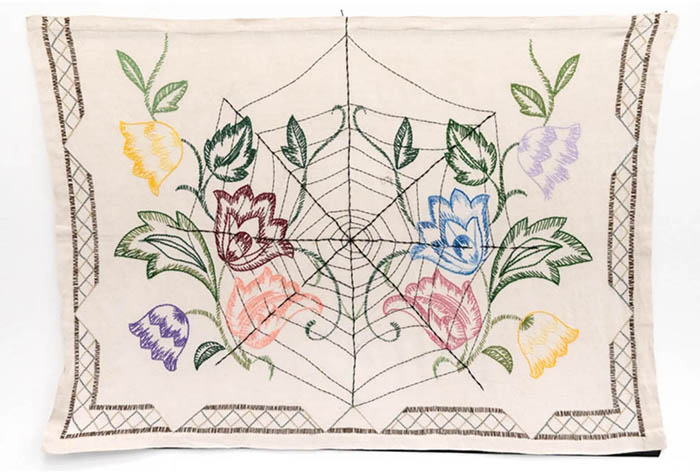‘Urban centres: Connecting memory, uses and meaning’ with Ana Jotta, Inês Moreira, Maria Manuel Oliveira and Ricardo Rodrigues
Cycle of debates ‘Architecture and Art in the (Re)Construction of the Urban Place’

‘Urban centres: Connecting memory, uses and meaning’ with Ana Jotta, Inês Moreira, Maria Manuel Oliveira and Ricardo Rodrigues Cycle of debates ‘Architecture and Art in the (Re)Construction of the Urban Place’
7th November 2024, Thursday, 6.30pm, CAAA - Guimarães
‘Urban centres: Connecting memory, uses and meaning’ is the title of the second session of the cycle of debates ‘Architecture and Art in the (Re)Construction of Urban Place’, with the participation of Ana Jotta (artist), Inês Moreira (curator/architect/researcher), Maria Manuel Oliveira (architect) and Ricardo Rodrigues (head of the Guimarães historic centre division).
The urban regeneration of Praça do Toural, the result of the European Capital of Culture Guimarães 2012, will be the starting point for this conversation between its authors - architect Maria Manuel Oliveira and artist Ana Jotta. The conversation will address the challenges and the divergent reception that the project has generated among the various local agents. A decade on, the aim is to identify the lessons learnt from this process for future urban interventions of a transdisciplinary nature.
At the same time as this retrospective look, the Couros neighbourhood, recently classified as a UNESCO World Heritage Site (2023), is integrating Public Art as an inclusion strategy in its current and future regeneration. To explore this dimension, architect Ricardo Rodrigues, current Head of the Historic Centre Division, will talk about these rehabilitation processes, analysing the role of art in this process of transforming the city of Guimarães.
Researcher Inês Moreira (ESAP-CEAA), Cultural Programmer and Architecture Curator at the European Capital of Culture 2012, will join the debate with a critical reflection on the disciplinary and operational limits of artistic and architectural practices in the production of contemporary urban culture.
Biographies
Ana Jotta born in Lisbon, Portugal, in 1946, where she lives and works. A visual artist trained at the Lisbon Fine Arts and the École de Arts Visuels et d'Architecture de l'Abbeye de la Cambre (Brussels), she is recognised nationally and internationally for her ironic and forceful critique of the concepts of authorship/originality. Extraordinarily diverse and heteroclite in conception, formulation or presentation, her work occupies its own space of freedom, always starting from writing - records she calls defootnotes, which are transformed into techniques as varied as engraving, drawing, embroidery, painting, ceramics or sculpture.
Inês Moreira is a researcher, curator and editor based in Porto. Throughout her career, she has developed interdisciplinary research in the areas of Architecture, Visual Cultures, Urban Cultures and Curatorial Studies, focusing on the transformation of abandoned buildings, post-industrial structures and other territories. She has taught at different universities and is currently an assistant researcher at the Arnaldo Araújo Research Centre (2023-2029), where she created the ‘Extreme Sites’ project. She was an IHA/NOVA/FCSH postdoctoral fellow (2016-2022) with the individual project: ‘Curating and revitalising buildings - Intervening in post-st industrial space in Europe in the 21st century’. PhD in Curatorial/Knowledge, Goldsmiths College, Univ. London, 2014, Master in Architecture and Urban Culture, Universitat Politècnica de Catalunya, Barcelona, 2004 and Licentiate in Architecture, University of Porto, 2001.
inesmoreira.org
Maria Manuel Oliveira is an architect from ESBAP (1985) and Associate Professor with Aggregation at the School of Architecture, Art and Design, University of Minho. She has been teaching there since 1997 and develops architecture and urban design projects within the scope of its Study Centre. She is a researcher at the Landscapes, Heritage and Territory Laboratory - Lab2PT. Her research interests centre on intervention in built heritage and abandoned areas in the city. Previously, she was a freelance architect, worked in the Urban Planning Office of the City of Guimarães, taught in the Department of Architecture at the University of Angola and at FAUP, where she was also a member of the Centre for the Study of Architecture and Urbanism (CEAU).
Ricardo Rodrigues was born in 1977 and has been working as a municipal architect in Guimarães since 2001, as part of the team coordinating the rehabilitation of the city's ‘historic centre’. He is the author and coordinator of projects and redevelopment works for public and private buildings and public spaces, as well as studies and plans for the rehabilitation of degraded urban areas - particularly the Zona de Couros and the conversion of the former Fábrica Âncora. Since 2021, he has been head of the World Heritage and Classified Property Division, the municipal team responsible for managing/coordinating the urban regeneration of Guimarães city centre.
About the Cycle ‘Architecture and Art in the (Re)Construction of Urban Place’
‘Architecture and Art in the (Re)Construction of Urban Place’ is a Cycle of Debates that promotes a moment of public and collective reflection on contemporary processes of spatial production of the urban. This cycle is part of the research carried out by Inês Osório (FCT scholarship holder) as part of the PhD programme in Architecture, Dynamics and Urban Forms at FAUP, affiliated to the ‘Morphologies and Dynamics of the Territory’ research group at the Centre for Architecture and Urbanism Studies (MDT/CEAU-FAUP).
Sponsors: zet gallery | Host organisations: CEAU/FAUP, CAAA, zet gallery | Research funded by FCT, República Portuguesa-Educação, Ciência e Inovação
Programme subject to change (without prior notice).
This initiative may be recorded and publicised by FAUP through photography and video.FAUP does not issue attendance declarations or online attendance of the event.